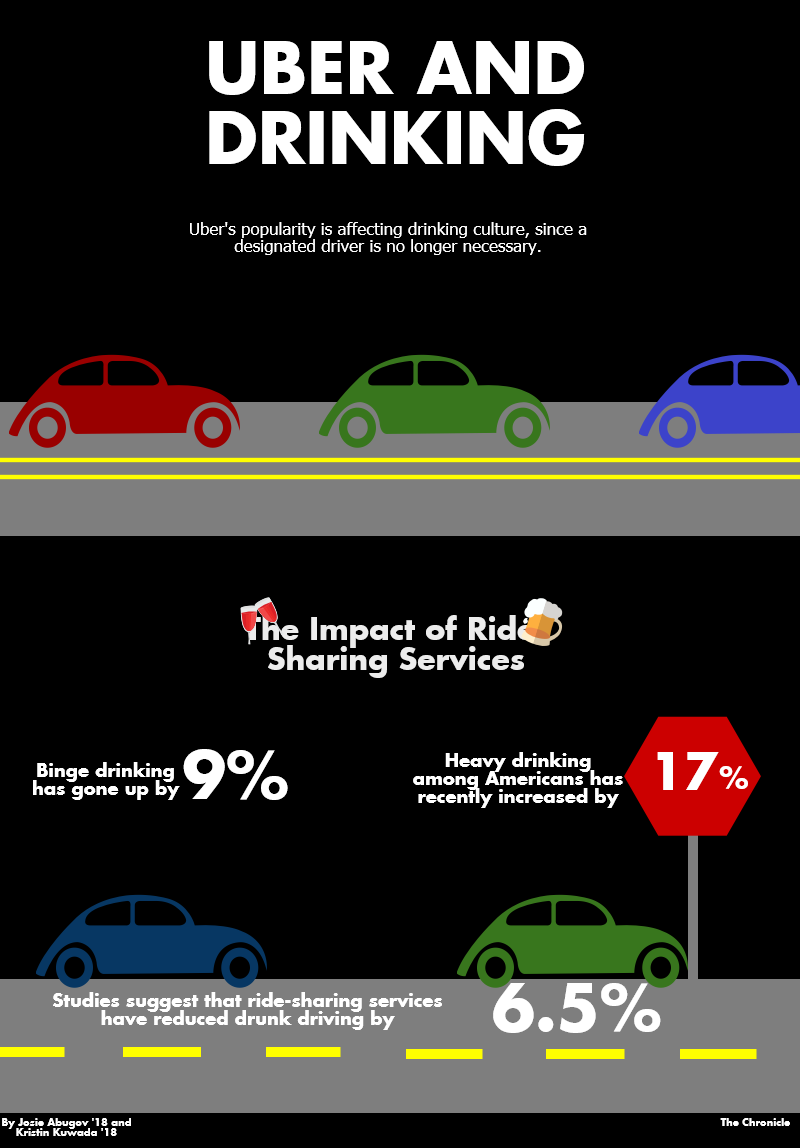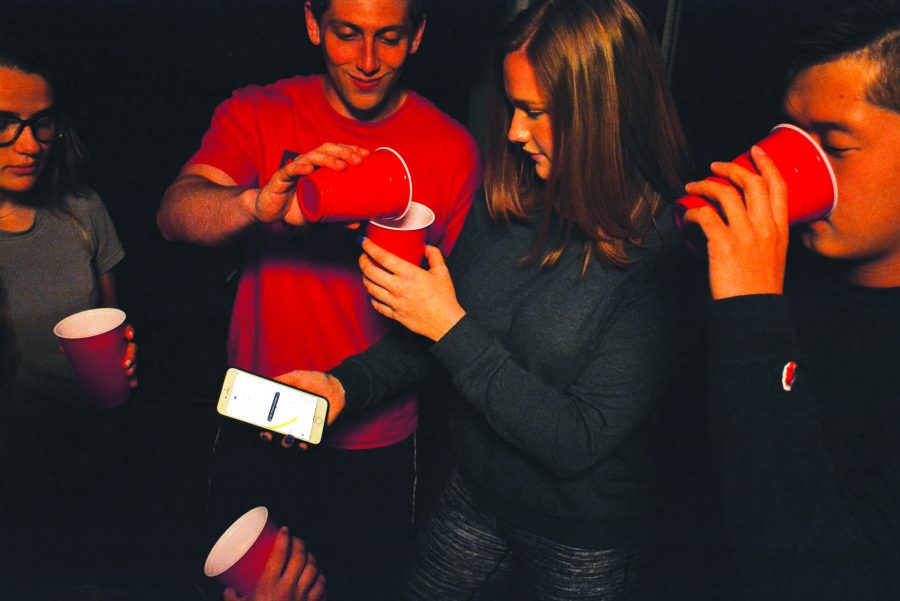“Don’t drink and drive,” is a maxim drilled into every adolescent mind.
So when *Harry Smith ’17 set out for a Friday night house party with friends as the designated driver, he had no intentions of getting wasted.
Yet as the bottle of Grey Goose and red Solo cups were passed around, he gave into the temptation knowing he could instead rely on Uber to get him and his friends home safely.
“Before I knew it, that one sip of vodka turned into several more shots as the music blasted and new bottles were being passed around,” Smith said.
Prior to Uber and Lyft, many teenagers went to and from parties by relying on a designated driver, allowing at least one sober-minded peer who might help control the alcohol-influenced behaviors and decision-making of passengers.
Uber, Lyft, and other ride services have effectively assumed the position of the designated driver, eliminating the need for a sober individual in the group.
“[In the past], if everyone else was drinking and partying, the only reason one person wouldn’t be drinking is because they had to drive. If they don’t have to do this anymore because of Uber, everyone is going to be partying together,” said Jeremy Manne, the Director of Admissions at Paradigm, an adolescent treatment center in Malibu. “I definitely think Uber has developed use [of alcohol] because people know that they can drink more because they don’t need to worry about driving themselves.”
In his counseling, Manne has worked with families who partially blame Uber and Lyft for enabling their children to sneak around town and attend parties and drink alcohol, he said.
A 2015 Mothers Against Drunk Driving (MADD) report suggests that ride-sharing applications such as Uber and Lyft have helped reduce drunk-driving crashes by 6.5 percent in California.
However, the Institute for Health Metrics and Evaluation at the University of Washington reported that since 2005, heavy drinking among Americans is up 17 percent, and binge drinking is up nine percent.
The report concludes that alcohol is killing Americans at a rate not seen in at least 35 years.
“I think subconsciously driving services promote drinking because they enable it since they are so accessible, making it easier for someone to drink at parties,” Jacob Tucker ’17 said.
Uber drivers acknowledge that they are commonly called upon to act as sober drivers.
“Later at night, like most of the time, I get people who are intoxicated or people who are going in between different clubs or venues,” said Uber driver Georges, who didn’t wish to provide his last name.
He said that intoxicated passengers occasionally get sick in the back of his car, which some students consider to be an added benefit of driving services.
“If someone gets sick in an Uber, it is an easy thing to fix and takes no explanation,” *Lila Jones ’17 said. “Teenagers can pay their Uber [to clean up the vomit] versus in a kid’s car that would pose a problem with many parents, making Uber more convenient for certain people.”
Jones said she feels more comfortable in an Uber than when she had to rely on a supposedly sober friend as a designated driver.
“I never knew if my friend was 100 percent sober but assumed and hoped that he or she was,” she said.
Underage drinking accounts for 11 percent of alcohol consumption in the United States, according to the Substance Abuse and Mental Health Association.
Matthew Torrington, a Culver City family physician, shares similar concerns when it comes to teens acting as the “responsible driver.”
“Unfortunately, people who think that they aren’t going to drink too much and drive, end up drinking a lot and still drive,” Torrington said. “I never cease to be amazed by how much kids in certain situations drink, which is really dangerous.”
The current generation will be the first to grow up with such easy access to on-demand designated drivers. This has some parents concerned.
“I think it is possible that Uber leads to adolescent binge drinking,” a parent of a junior at Harvard-Westlake said. “It applies to adults as well because it is an excuse to go out and get drunk without having to worry about what kind of shape you are in.”
The parent, who wished to remain anonymous, added that she is relieved teenagers can use Uber as an alternative to drunk driving because a drunk driver may not only kill him or herself and other passengers, but also other innocent bystanders on the road.
Other parents prefer that their child call an Uber or other ride servicer as a second resort.
“I think the best thing for someone to do is to have their parent pick them up,” a mother of another junior, who also asked to remain anonymous, said. “We are definitely happy to go anywhere day or night, and that way the parent can see what shape the child is in when he or she is leaving the party.”
Some parents take their own cautionary measures when their children host parties at home by asking the attendees for their car keys, requiring them to find a safe ride home via a parent or driving service or asking them to spend the night.
Police Officer Mike Yamada of the Motor Office Traffic Bureau at the Beverly Hills Police Department said that he thinks many people have not made the connection between ride-sharing services and increased use of alcohol.
“Even though Uber and Lyft maybe be advocating that an individual can drink because they are there to provide a driving service, [the Beverly Hills Police Department] still believes in personal responsibility because unfortunately alcohol does affect someone’s reasoning and judgement,” Yamada said.
He is thankful, however, that adolescents are not driving drunk, he said.
Torrington believes that reducing alcohol-related deaths is paramount.
“The worst outcome is drinking and driving,” Torrington said.
Uber is the alternative teens are turning to.
“At the end of the day, although I do believe it is not okay that kids take advantage of Uber, as they drink more, I do think it is a much better alternative than teenagers being dangers to themselves and others on the road driving drunk,” Jones said.
*Names have been changed.






























